
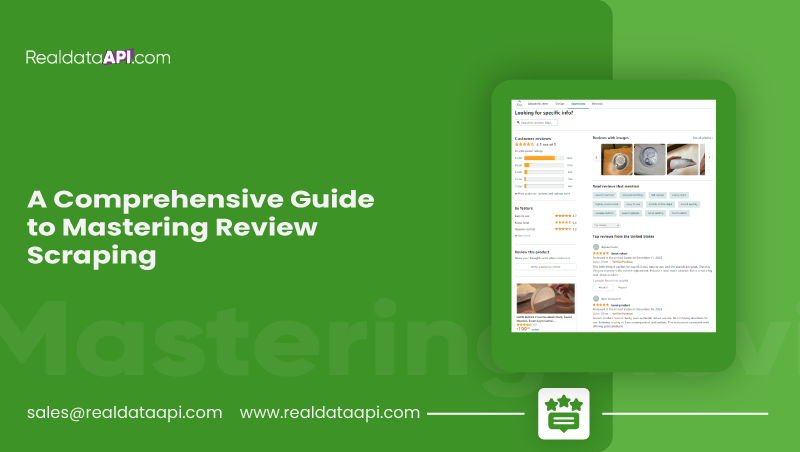
Introduction
In today's digital era, harnessing the wealth of information within online reviews is a transformative skill. This guide is your key to unlocking the potential of review scraping, offering insights into the nuances of data extraction. From understanding the significance of consumer sentiment to navigating the intricacies of responsible scraping practices, this comprehensive resource equips you with the knowledge and tools needed for success. Join us on a journey through the world of review scraping, where actionable insights and ethical considerations converge to elevate your understanding of online data extraction.
What is Review Scraping?
Review scraping is a data extraction technique focused on retrieving information from online reviews on various platforms such as Yelp, Google Reviews, or TripAdvisor. This process involves using web scraping tools or scripts to collect and organize relevant data from user-generated reviews. Review scraping can include extracting details like ratings, comments, timestamps, and other valuable insights from various products, services, or businesses. This collected data is often utilized for market research, sentiment analysis, and understanding customer feedback. It enables businesses and researchers to comprehensively understand consumer sentiments, preferences, and trends across different online platforms.
What are the Methods for Extracting Product or Customer Reviews from E-Commerce Websites?
In the vast landscape of e-commerce, extracting valuable insights from product and customer reviews is a game-changer for businesses seeking to understand consumer sentiments and preferences. Various methods can be employed to efficiently scrape this data from e-commerce websites, providing a wealth of information for market analysis, product development, and customer engagement.
1. Web Scraping with Python:
Python, a versatile programming language, is often the language of choice for web scraping due to its rich ecosystem of libraries. Libraries such as BeautifulSoup and Scrapy enable developers to navigate and extract information from HTML and XML documents. Crafting scripts can target specific HTML elements containing reviews and systematically gather the desired data.
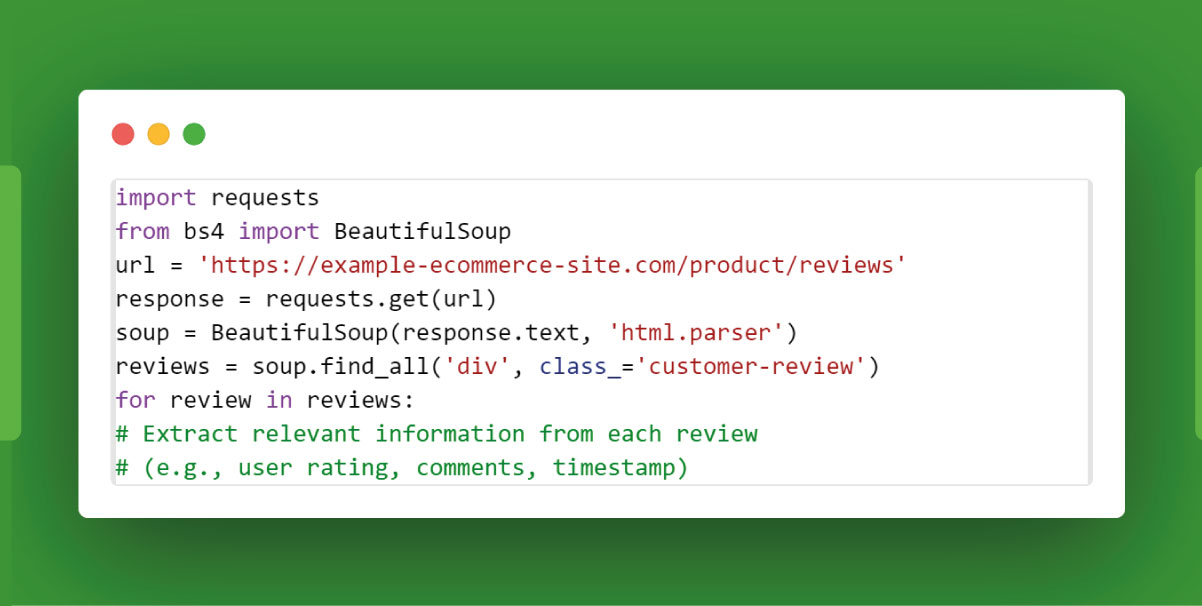
2. API Integration
Many e-commerce platforms provide Application Programming Interfaces (APIs) that allow developers to access structured data, including product and customer reviews, in a more controlled and efficient manner. By obtaining an API key and adhering to the platform's documentation, businesses can integrate API calls into their applications to retrieve review data.
3. Headless Browsing with Selenium
Headless browsers like Selenium can be valuable for websites that heavily rely on JavaScript to load content dynamically. Selenium automates web browsers, allowing for executing scripts that interact with the website as a user would. This method is beneficial when reviews are rendered dynamically after the initial page load.
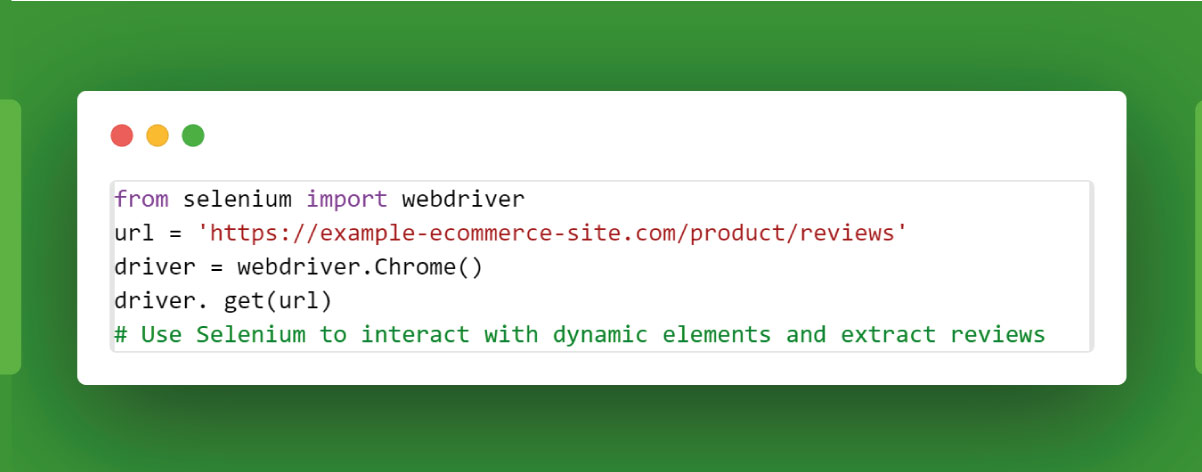
4. Browser Extensions
Browser extensions, such as Chrome extensions, can offer a user-friendly approach for individuals without programming skills. Some extensions are designed explicitly for scraping reviews, allowing users to navigate to an e-commerce site, activate the extension, and collect review data effortlessly.
Best Practices and Considerations
- Respect Robots.txt: Always check the website's robots.txt file and adhere to any guidelines or restrictions to maintain ethical scraping practices.
- Rate Limiting: Implement rate limiting to avoid undue stress on the website's server and prevent potential IP blocking.
- User-Agent Rotation: Rotate user-agent strings to mimic diverse browser interactions and reduce the risk of detection.
- Legal and Ethical Compliance: Ensure the extraction process aligns with the website's terms of service, copyright laws, and ethical standards.
By employing these methods and adhering to best practices, businesses can effectively extract and leverage product and customer reviews from e-commerce websites, gaining valuable insights to inform strategic decision-making and enhance customer experiences.
Extracting Product and Customer Reviews from E-commerce Platforms in 7 Easy Steps
Scraping product and customer reviews from e-commerce sites can be a valuable source of information for businesses and researchers. Here's a step-by-step guide to help you navigate the process effectively:
1. Identify the Target Website
Choose the e-commerce site from which you want to scrape reviews. Common platforms include Amazon, eBay, or specific brand websites.
2. Understand the Website Structure
Inspect the website's HTML structure using browser developer tools to identify the HTML elements containing review information. Understand the classes, tags, and attributes associated with reviews.
3. Choose a Scraping Method
Select a scraping method based on your technical proficiency and the website's complexity. Options include using Python libraries (BeautifulSoup, Scrapy), API integration, headless browsing with Selenium, or browser extensions.
4. Set Up Your Environment
If using Python, install the required libraries using pip. Set up your coding environment, and ensure you have the necessary tools, such as a web browser and a code editor.
pip install requests beautifulsoup45. Write the Scraping Script
Craft a Python script to scrape reviews. Use the chosen method to send HTTP requests, parse HTML content, and extract relevant information like ratings, comments, and timestamps.
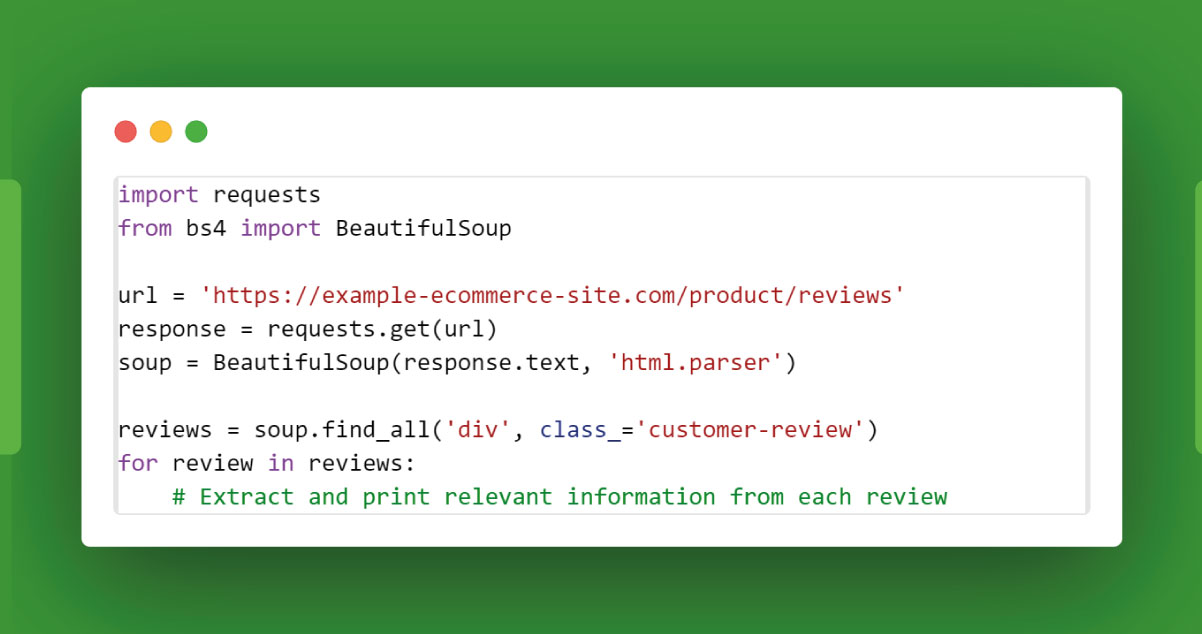
6. Handle Dynamic Content (if necessary)
If reviews are loaded dynamically using JavaScript, consider using a headless browser like Selenium to interact with dynamic elements and ensure all content is captured.
7. Implement Ethical Scraping Practices
Adhere to ethical scraping practices to avoid potential legal issues and ensure responsible data extraction.
Respect the website's terms of service.
Implement rate limiting to avoid aggressive scraping.
Rotate user-agent strings to mimic diverse browser interactions.
Check and respect the website's robots.txt file.
Bonus Step: Data Storage and Analysis
Decide how to store the scraped data. Options include writing to a file (CSV, JSON), storing in a database, or utilizing cloud storage. Analyze the data for actionable insights.
By following these steps and incorporating ethical considerations, you can successfully scrape product and customer reviews from e-commerce sites, unlocking valuable insights for your business or research endeavors.
How To Extract Customers Reviews Using Social Media Websites?
Scraping customer reviews from social media platforms involves specific considerations due to the dynamic nature of these sites. Here's a general guide:
Select the Social Media Platform
Choose the platform where you want to scrape reviews, such as Facebook, Twitter, or Instagram.
Understand Platform Policies: Scraping customer reviews from social media platforms involves specific considerations due to the dynamic nature of these sites. Here's a general guide:
Select the Social Media Platform
Choose the platform where you want to scrape reviews, such as Facebook, Twitter, or Instagram.
Understand Platform Policies
Review and comply with the platform's terms of service and data usage policies to ensure ethical scraping.
Use API (if available)
Check if the platform provides an API for accessing review data. APIs offer a structured and more reliable way to gather information.
Explore Web Scraping Tools
If an API is not available, consider web scraping tools like BeautifulSoup, Scrapy, or Selenium. These tools can help extract data from HTML structures.
Inspect HTML Structure
Use browser developer tools to inspect the HTML structure of the social media page. Identify the tags and classes associated with review elements.
Write a Scraping Script
Develop a scraping script in a programming language like Python. Target specific HTML elements containing review information and extract relevant data.
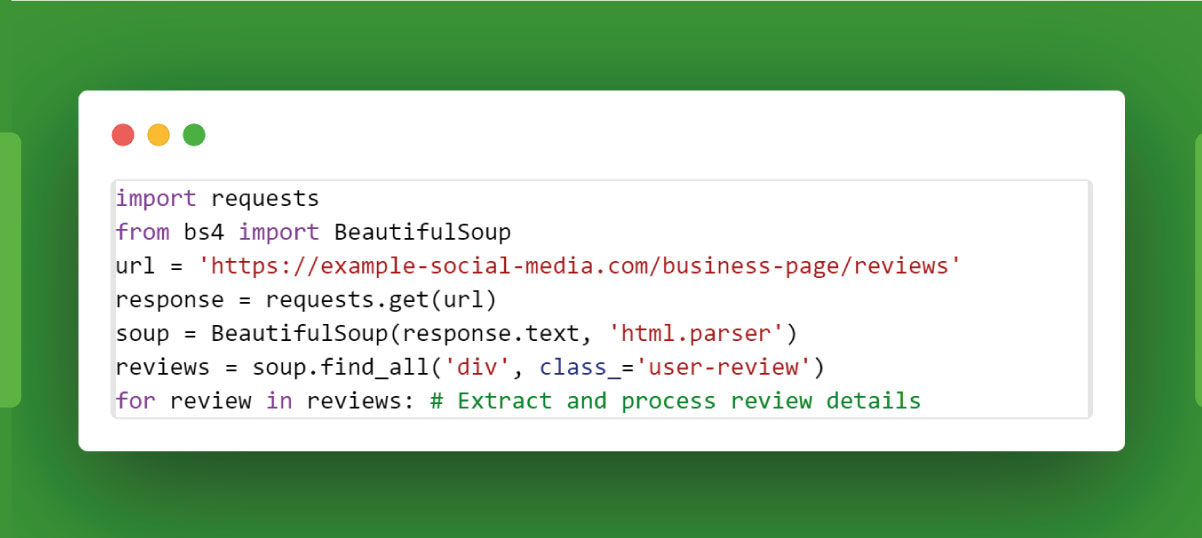
Handle Dynamic Content
Social media platforms often use dynamic content loading with JavaScript. If needed, use tools like Selenium for interaction with dynamic elements.
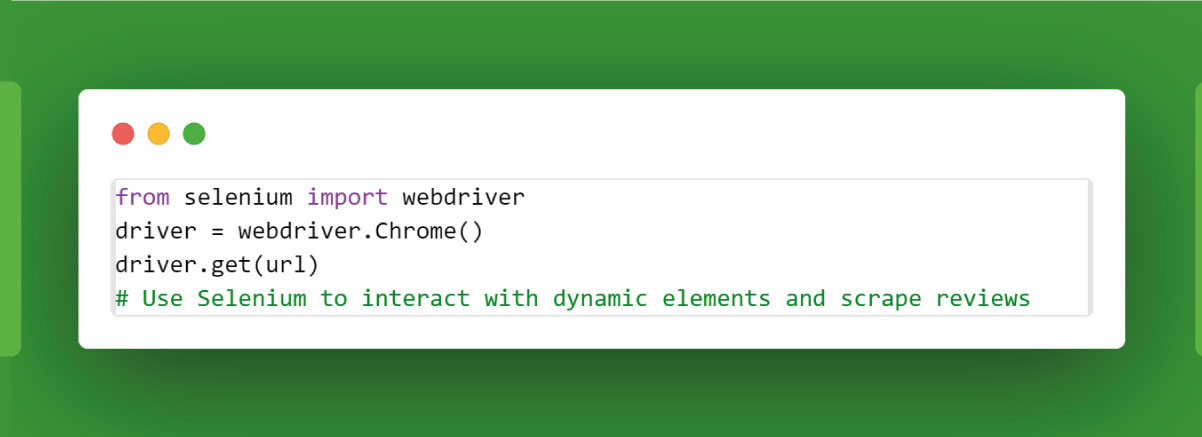
Always prioritize ethical scraping practices, respecting platform policies and legal considerations. Regularly check for updates in the platform's structure and adapt your scraping script accordingly. Remember that scraping social media data should align with privacy laws and ethical standards.
6 Steps of Scraping Customer Reviews and Social Mentions from Social Media Websites
Scraping social mentions and customer reviews from social media platforms can provide valuable insights for businesses. Here's a concise guide to help you navigate this process:
1. Define Your Objective
Clearly define the scope of your scraping project. Identify the specific social media platform, target accounts, and the type of mentions or reviews you want to extract.
2. Choose a Social Media Platform
Select the social media platform(s) relevant to your objective. Popular platforms include Twitter, Facebook, Instagram, or LinkedIn.
3. Understand Platform Policies
Review and adhere to the terms of service, API usage policies, and data protection regulations of the chosen social media platform. Ensure compliance with ethical scraping practices.
4. Use Social Media APIs (if available)
Check if the platform provides APIs for accessing mentions and reviews. APIs offer a structured and authorized way to gather data. Obtain necessary API keys and credentials.
5. Employ Web Scraping Tools
If an API is not available or does not meet your requirements, consider using web scraping tools such as BeautifulSoup, Scrapy, or Selenium. These tools allow you to extract data from HTML structures.
6. Develop a Scraping Script
Write a script in a programming language like Python to scrape mentions and reviews. Target specific HTML elements or use API endpoints to extract relevant data.
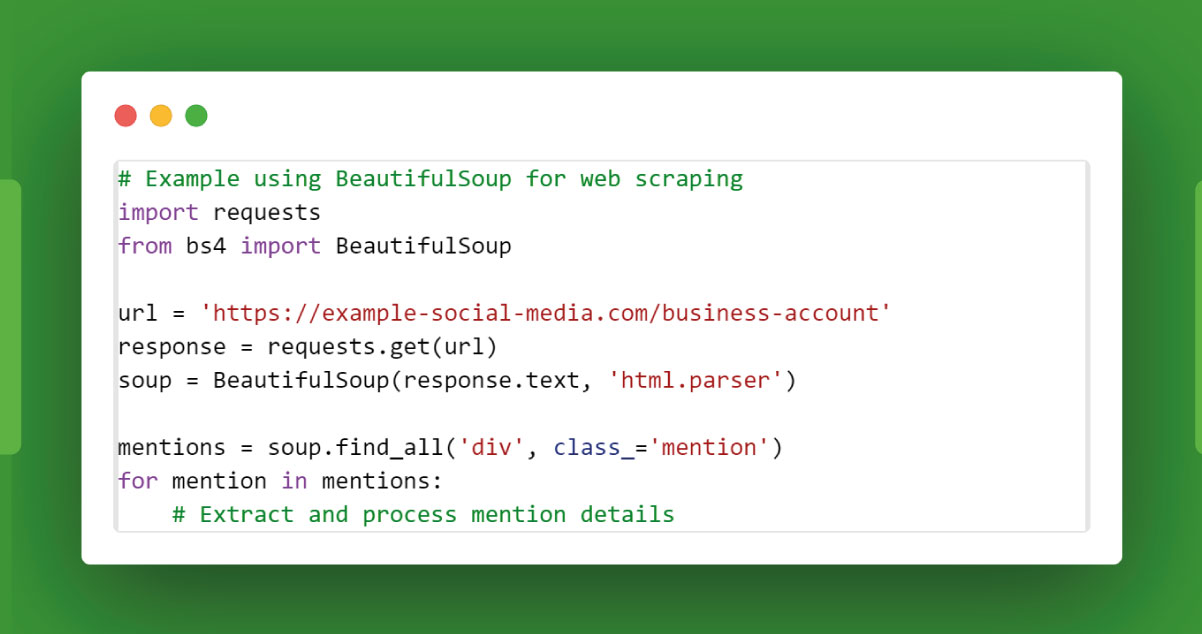
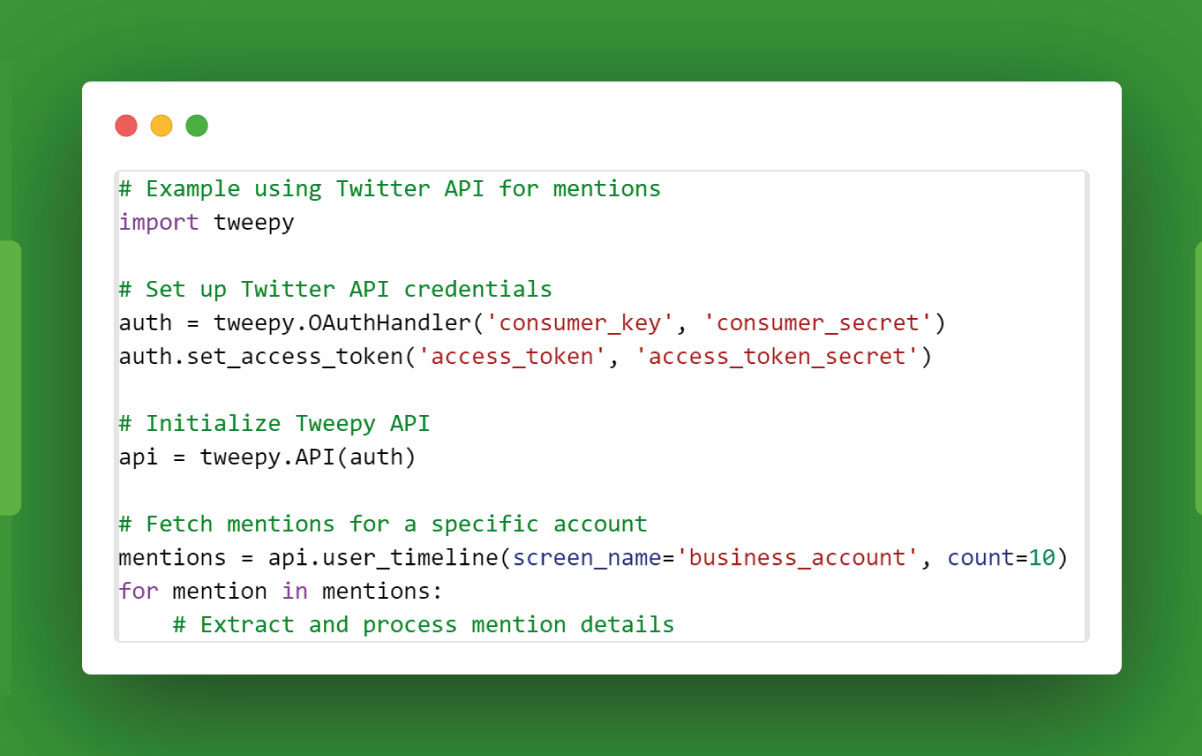
Always prioritize ethical scraping practices, respect platform policies, and be mindful of legal considerations. Regularly update your scraping script to adapt to changes in the social media platform's structure or policies.
Conclusion
While manual data gathering from social media platforms can be time-consuming and limited, leveraging the Real Data API offers a streamlined and efficient solution for extracting social mentions and customer reviews. This comprehensive tool simplifies the scraping process and provides structured and real-time access to valuable data, empowering businesses to make informed decisions.
The Real Data API ensures compliance with platform policies, offering a secure and ethical approach to data extraction. By seamlessly integrating this API into your workflow, you gain a competitive edge in monitoring social mentions, understanding customer sentiments, and staying ahead in the ever-evolving landscape of social media analytics.
Use the opportunity to enhance your data strategy with the Real Data API. Elevate your insights, improve decision-making, and propel your business forward. Embrace the future of data extraction – explore the Real Data API today and unlock valuable information at your fingertips. Your journey to actionable intelligence begins with a simple click – integrate the Real Data API and transform how you harness social media data.















